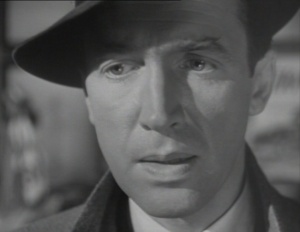 It’s a Wonderful Life (Frank Capra, 1946)
It’s a Wonderful Life (Frank Capra, 1946)
In his autobiography The Name Above the Title, Frank Capra was straightforward in his self-assessment of It’s a Wonderful Life. “I thought it was the greatest film I had ever made,” he wrote, adding: “Better yet, I thought it was the greatest film anybody had ever made.” We might fault Capra for saying it himself, but the passage of time has largely vindicated his hubris. As fewer and fewer films from the middle of the twentieth century are revived, It’s a Wonderful Life remains one of the perennial standards, still widely loved by popular audiences rather than just a hard core of film buffs. Its impact on audiences remains strong: the dulling of impact usually wrought by the passage of time has not appreciably weakened the film. This is particularly surprising given the its firm footing in its time. The film expresses many of the fears and hopes of America after World War II, and is one of the most rewarding films to study in looking at the values espoused by Hollywood at the start of the post-war era.
We do the film a disservice, though, if we only consider it as a social document and forget its value as an entertainment. As a film designed to get an emotional response, it is about as effective as any made. This at first seems to be for straightforward reasons. It is a sentimental story of an impossibly good man – George Bailey, played by one of the twentieth century’s most charismatic actors, James Stewart – who gives up many of his dreams to support his family, friends, and community. Bailey falls on bad times, is mistreated, and loses faith… only to regain it at the conclusion of the film. Broadly speaking, it’s a classic Hollywood trajectory and the impact of the film might therefore seem not at all mysterious. The extreme goodness of Bailey gets us on-side, and we have a hissable villain to contrast him with in the corrupt developer Henry Potter. The misfortunes that fall upon our good character arouse our sympathies, and we can cheer when he overcomes them. Yet there’s something more going on here than this standard storytelling device. Beyond the broad sweep of the story, the film’s approach is actually highly unusual and rarely imitated.